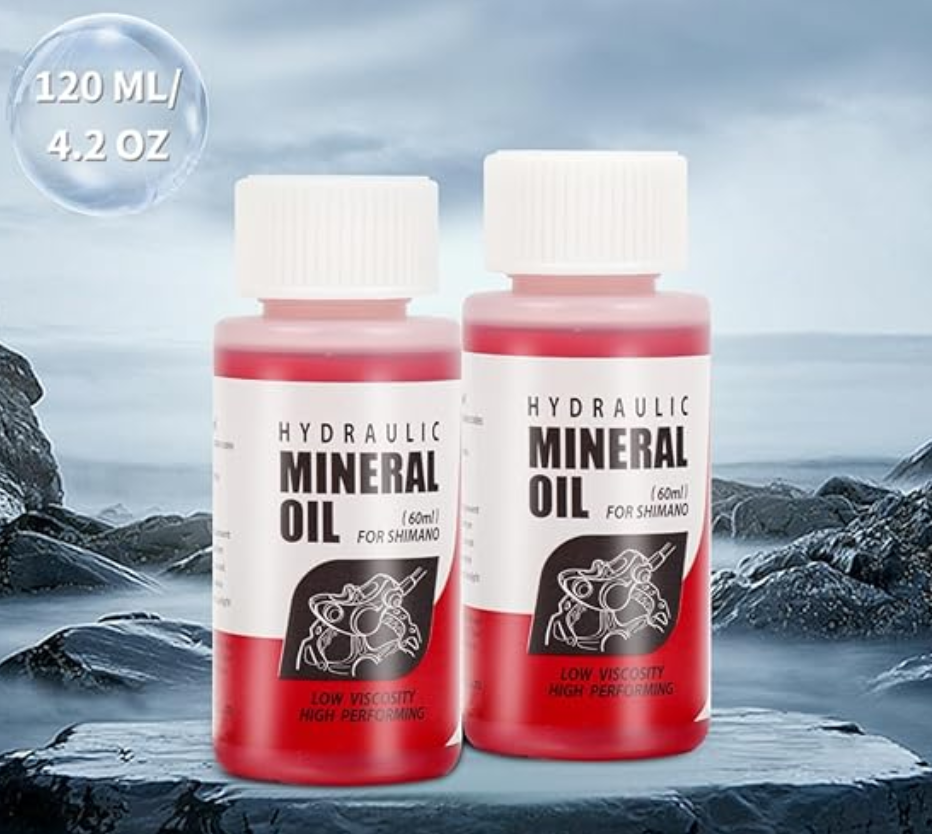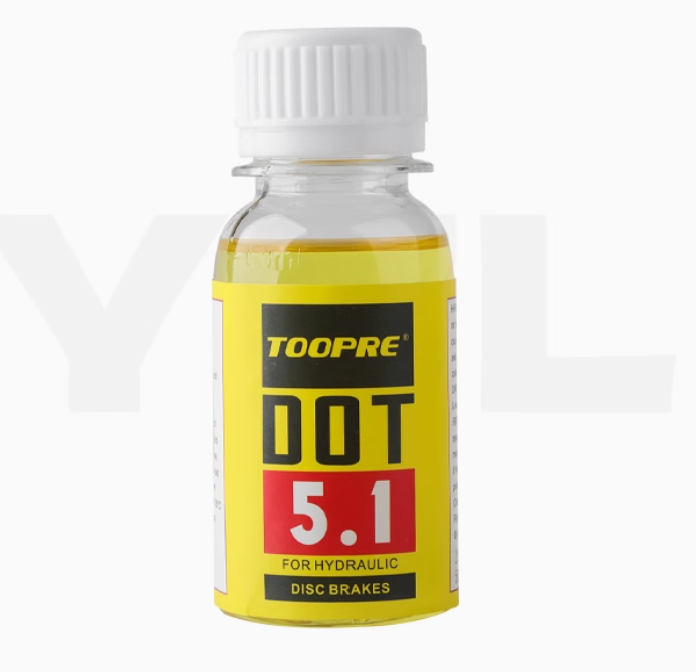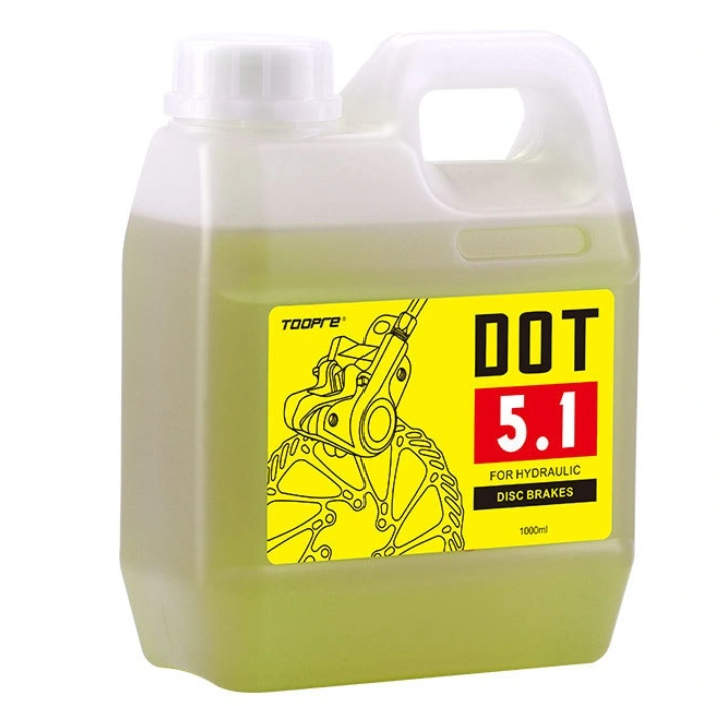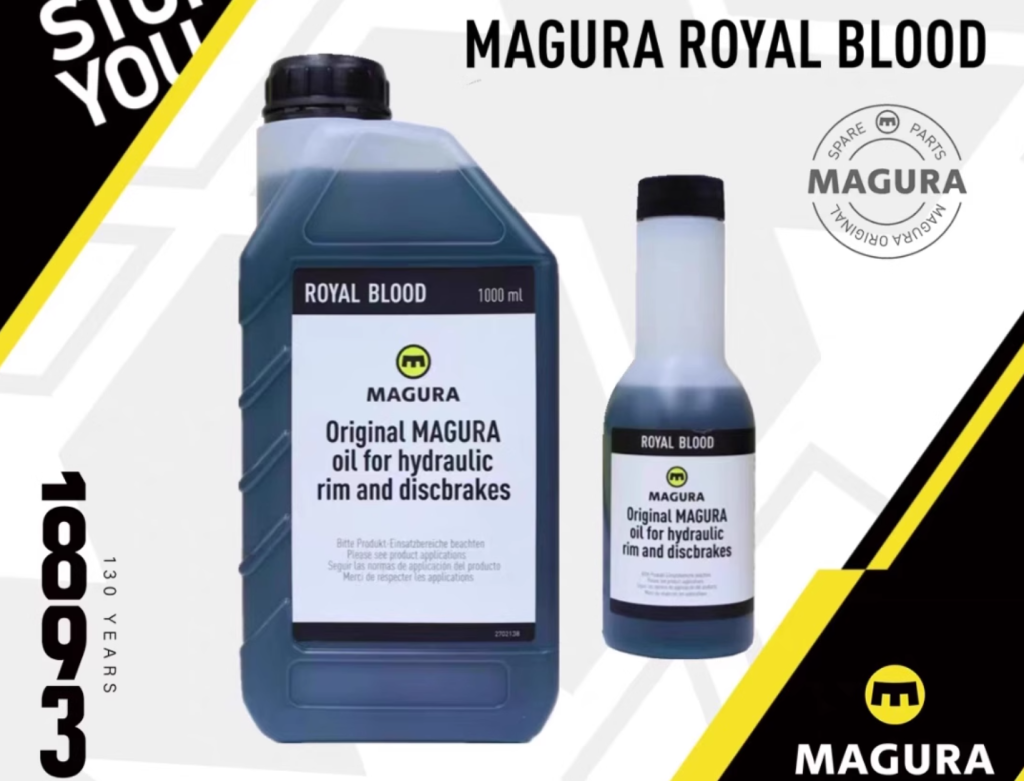Bicycle hydraulic disc brake systems require brake oil with characteristics such as high boiling point (resistant to thermal fade), low viscosity (good fluidity), and high chemical stability (not easily corroding metal and rubber components). The oil for disc brake systems primarily focuses on performance such as resistance to thermal fade and compatibility with rubber components to ensure stable and reliable pressure transmission during braking, achieving good braking effects. Common brake oil types used in hydraulic disc brake systems include mineral oil, DOT oil, and some other special brake oils.
1. Mineral Oil – one of the most common brake oil types
Bicycle hydraulic disc brake systems commonly use mineral oil as one of their brake oils. Its main component is refined mineral oil, a petroleum-based product that typically includes additives like antioxidants and rust inhibitors to enhance oil performance. In the bicycle industry, mid-to-high-end hydraulic disc brake systems from mainstream brands such as Shimano and Tektro often use mineral oil. The main characteristics of this brake oil are as follows: it has a high boiling point, with the dry boiling point of standard mineral oil being approximately above 200°C, and some high-end models can reach 260°C, showing excellent resistance to thermal fade in high-temperature scenarios such as long downhill rides; at the same time, mineral oil has low corrosion to the rubber seals in the system, is not prone to causing swelling or hardening of the seals during long-term use, and has good compatibility; moreover, compared with DOT oil, mineral oil has a lower cost, and some brands support “open” oil filling, eliminating the need for special tools during maintenance.

When using mineral oil, it should be noted that it must not be mixed with DOT oil, as this will cause chemical reactions and damage the system; in low-temperature environments, mineral oil has slightly higher viscosity, and in extreme low temperatures (below -20°C), it may affect the braking feel.
2. DOT Oil
The English full name of DOT oil is Department of Transportation Oil. Such oils need to pass the performance standard certification formulated by DOT, such as DOT 3, DOT 4, DOT 5.1, etc., to ensure safety and reliability. DOT oil primarily consists of ethylene glycol ethers or silicon-based compounds. Common specifications include DOT 3, DOT 4, DOT 5.1, etc. Among them, DOT 5.1 is made up of ethylene glycol ethers and borate esters.


In bicycle hydraulic disc brake systems, among all the brake oil types, brands such as SRAM, Hope, and Formula mostly use DOT oil. Some high-end road bike disc brakes, such as SRAM RED eTap AXS HRD, also use this type of brake oil. DOT oil has significant performance characteristics: it has an extremely high boiling point. Take DOT 5.1 as an example. Its dry boiling point can reach above 265°C. The wet boiling point (after absorbing moisture) can still remain above 180°C. It shows extremely high resistance to thermal fade in high-load scenarios like high-intensity off-roading or competitions. In addition, DOT oil has excellent low-temperature fluidity and low viscosity. It ensures smooth oil transmission even in extremely cold environments of -40°C.
However, DOT oil has strong water-absorbing property. Its boiling point will decrease after water penetration during long-term use, so replace it regularly within 1-2 years. Moreover, DOT oil is highly corrosive and must use special EPDM rubber seals.
Contact with ordinary rubber will cause corrosion and swelling. Meanwhile, DOT oils of different grades have distinct chemical compositions and cannot be mixed. You must thoroughly clean the oil circuit during replacement.
3. Special Types of Hydraulic Oil
3.1 Silicone Oil
Polydimethylsiloxane is the main component of silicone oil, which belongs to organosilicon compounds. In bicycle brake systems, some low-end disc brake systems or experimental designs, such as old-model Hayes disc brakes, early used silicone oil. It has extremely high chemical stability and hardly corrodes rubber components. However, silicone oil has a low boiling point (approximately 150-180°C). It is prone to generating bubbles in high-temperature environments, leading to a decline in braking performance. Now it has been gradually replaced by mineral oil and DOT oil. When using silicone oil as brake oil, its performance limitations make it unsuitable for high-intensity and long-time braking scenarios. If there is residue of other oils in the system, thoroughly clean it before adding silicone oil. This avoids adverse reactions caused by mixing.
3.2 Custom Synthetic Oil
Some high-end brands develop custom synthetic brake oil types, such as Magura’s Royal Blood brake oil. This type of custom synthetic oil is usually based on low-viscosity mineral oil with special components like high-molecular polymers. Take Magura Royal Blood as an example—its boiling point reaches above 270°C. It integrates the advantages of mineral oil and DOT oil. Not only does it have strong resistance to thermal fade, but it also offers better fluidity than traditional mineral oil. Suitable for extreme environments, it can meet the requirements of high-performance bicycle disc brake systems.

When using custom synthetic oil, it is necessary to strictly follow the brand’s requirements for maintenance and replacement. Due to its special composition, avoid mixing with other brake oils to ensure brake system stability and safety. At the same time, custom synthetic oils from different brands vary in performance and application scope. During replacement, ensure the oil is fully compatible with the brake system.
By the way, SUMLON has been manufacturing bicycle parts for over 15 years. Contact us if you are looking for a bike parts factory or a one-stop wholesaler. Peace.


.png)

